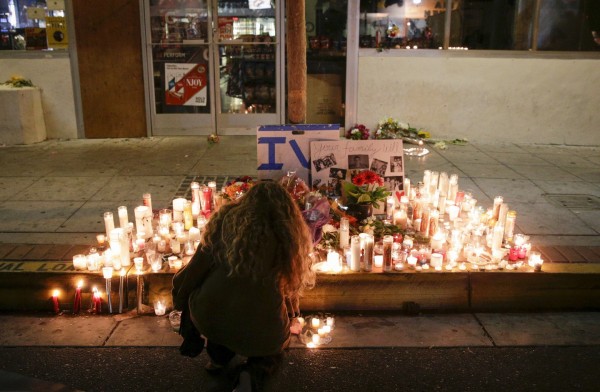Mental Illness And Violence: Challenging The "Monster" Narrative

Table of Contents
Debunking the Myth: Mental Illness Does Not Equal Violence
The association between mental illness and violence is a dangerous misconception. It's crucial to understand that mental illness itself does not cause violence. Instead, it's a far more nuanced issue.
Statistical Evidence
Numerous studies demonstrate the low rate of violence among individuals with mental illness. The reality is that people with mental health conditions are far more likely to be victims of violence than perpetrators.
- National Institute of Mental Health (NIMH): Studies consistently show that the rate of violence among individuals with mental illness is only slightly higher than in the general population, and often this is linked to other factors.
- World Health Organization (WHO): Data suggests that the risk of violence is increased by factors such as substance abuse and social disadvantage, not solely by the presence of mental illness.
It's critical to differentiate between correlation and causation. While some studies may show a correlation between certain mental illnesses and violent behavior, this does not mean that the illness causes the violence. Many other factors play significant roles.
The Role of Other Factors
Several factors contribute to violent behavior, often interacting in complex ways. Mental illness is rarely the sole cause.
- Substance Abuse: Drug and alcohol use significantly increase the risk of violence, regardless of mental health status.
- Socioeconomic Factors: Poverty, unemployment, and lack of social support can contribute to frustration and aggression, increasing the likelihood of violent behavior.
- Access to Healthcare: Lack of access to adequate mental healthcare can lead to untreated mental health conditions, potentially increasing the risk of violence. Early intervention is key.
- Trauma and Abuse: A history of trauma or abuse significantly increases the risk of both mental health problems and violent behavior.
Understanding this complex interplay is essential to developing effective strategies for violence prevention.
The Media's Portrayal and its Impact
The media plays a powerful role in shaping public perception of mental illness. Unfortunately, sensationalized and stereotypical portrayals frequently fuel the "monster" narrative.
Sensationalism and Stereotyping
Media outlets often depict individuals with mental illness as violent, unpredictable, and inherently dangerous. This fuels stigma and misunderstanding.
- Movies and Television: Many films and TV shows portray individuals with mental illnesses as villains or unstable characters.
- News Reports: News coverage sometimes focuses on isolated incidents of violence committed by individuals with mental illness, reinforcing negative stereotypes. The lack of balanced reporting further fuels this bias.
This biased portrayal has significant negative consequences, leading to discrimination, social isolation, and reluctance to seek help.
Responsible Reporting and its Importance
Responsible and accurate media reporting is crucial to combating the stigma surrounding mental illness and violence.
- Focus on facts, not fear-mongering: Media should avoid sensationalizing stories and instead present accurate information about mental illness and violence.
- Avoid labeling and stigmatizing language: Instead of using terms like "mentally ill killer," focus on the individual's actions and the broader societal factors involved.
- Highlight success stories and recovery: Showcase individuals with mental illness who have overcome challenges and lead fulfilling lives.
Accurate representation can help normalize mental illness and encourage individuals to seek help without fear of judgment.
Addressing Violence: A Focus on Prevention and Treatment
Effective strategies for addressing violence must focus on prevention and treatment, not simply on the presence of mental illness.
Early Intervention and Support
Early intervention and access to quality mental healthcare are critical in preventing violence.
- Early Diagnosis and Treatment: Early identification and treatment of mental health conditions can significantly reduce the risk of violent behavior.
- Support Systems: Strong social support networks, including family, friends, and community resources, are vital in helping individuals manage their mental health and reduce stress.
Providing accessible and affordable mental health services is essential.
Improving Access to Mental Healthcare
Significant barriers hinder access to mental healthcare.
- Affordability: The high cost of mental healthcare can prevent many individuals from receiving the help they need.
- Accessibility: Limited availability of mental health services, especially in rural areas, poses a significant challenge.
- Stigma: The persistent stigma associated with mental illness prevents many from seeking help.
Addressing these barriers requires increased funding for mental health services, expansion of access, and targeted efforts to reduce stigma through public awareness campaigns and education.
Conclusion
The relationship between mental illness and violence is complex and often misunderstood. Mental illness does not inherently equate to violence. Media portrayals significantly influence public perception, and responsible reporting is crucial to combatting harmful stereotypes. Effective prevention and treatment strategies, including early intervention and improved access to mental healthcare, are paramount.
By understanding the complex relationship between mental illness and violence and actively challenging the harmful "monster" narrative, we can build a more supportive and inclusive society for everyone. Let's work together to foster understanding and improve access to vital mental health resources. Let's replace the harmful stereotypes surrounding mental illness and violence with accurate information and compassionate action.

Featured Posts
-
 August Deadline Treasury Signals Potential Us Debt Limit Crisis
May 10, 2025
August Deadline Treasury Signals Potential Us Debt Limit Crisis
May 10, 2025 -
 Exploring Four Alternate Perspectives On Randall Flagg In Stephen Kings Novels
May 10, 2025
Exploring Four Alternate Perspectives On Randall Flagg In Stephen Kings Novels
May 10, 2025 -
 Trump Administrations Impact Ihsaa Restricts Transgender Girls In Sports
May 10, 2025
Trump Administrations Impact Ihsaa Restricts Transgender Girls In Sports
May 10, 2025 -
 Franko Polskoe Partnerstvo Podpisanie Oboronnogo Soglasheniya I Ego Vliyanie Na Mezhdunarodnuyu Politiku
May 10, 2025
Franko Polskoe Partnerstvo Podpisanie Oboronnogo Soglasheniya I Ego Vliyanie Na Mezhdunarodnuyu Politiku
May 10, 2025 -
 Intervention Des Pompiers Suite A Un Depart De Feu A La Mediatheque Champollion De Dijon
May 10, 2025
Intervention Des Pompiers Suite A Un Depart De Feu A La Mediatheque Champollion De Dijon
May 10, 2025
